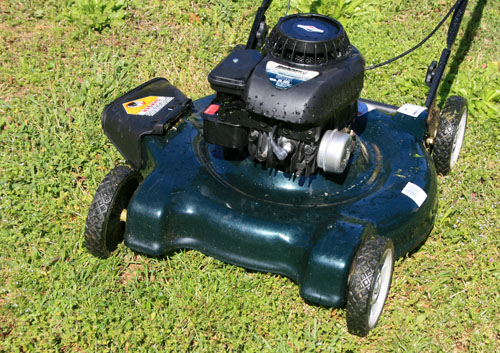Many view fall as the time to pack up the lawn mower and give the lawn a rest. Fall is actually the best time to evaluate cool-season grasses, like tall fescue, that have just experienced high, summer temperatures.
Take a walk around your lawn. How happy are you with your grass? Are there bare spots? How much of a problem were weeds this summer? And most importantly, how much time and money are you willing to put towards improving your lawn?
If you find yourself ready to make improvements, it might be time for a tall fescue rescue. The period between mid-September through mid-October is the perfect time for this project. You can plant tall fescue into November, but you will probably have better results earlier in the fall.
Renovation steps
The first step in any lawn renovation is to get a soil test. Your local University of Georgia Cooperative Extension office provides this service for a small fee. The information provided in a soil test report is well worth that investment. You will receive a profile of your soil fertility along with recommendations on how to improve it.
While you wait for the soil test results, remove as many weeds as possible. You may be able to do this by hand. It is important to remove as many of the roots as possible. If you choose to use a selective herbicide, read the label carefully and understand what the product does. Be aware of any residual activity and plant-back restrictions. You do not want to put seed on an area where the herbicide may prevent germination.
Next, prepare to plant the seed. Mow the grass low, to about 1.5 to 2 inches. Bag the clippings to get them off the lawn. Use a lawn rake to remove any dead grass or debris lying on the grass. The low mowing height and aggressive raking may cause the lawn to look bad, but the goal is allow the grass seeds to reach the soil.
Now aerate the grass. Aerating removes plugs of soil, opening air holes. It allows air and water to get to the roots of the grass more readily and gives roots some room to spread out. The plugs, or cores, will disappear after a couple of mowings or rains.
A lawn service can aerate the lawn for you. If you prefer to do it yourself, aerators are available for rent at rental equipment centers and hardware stores.
Choosing seed
Choose seed carefully and become an avid bag reader. Look for the blue tag on the seed bag. This indicates that the seed is certified and ensures the seed is pure and free of noxious weeds.
Make sure you buy the type of seed you want. Sometimes tall fescue seed is mixed with other cool-season grass seed such as Kentucky bluegrass. This will be indicated on the seed tag.
Be realistic with the project. If fescue hasn’t grown under your oak trees before, it probably won’t now.
You can plant seed directly into a thin lawn, which is called interseeding. Lawns can be interseeded with 2 to 5 pounds of seed per 1,000 square foot.
To ensure even coverage, use a broadcast spreader. Be careful not to apply too much seed. If too many seeds sprout they will compete with each other for light, water, space and nutrients. This results in unhealthy grass and possible pest problems.
For larger bare areas, top the seedbed with a light layer of compost and pack it down. Consider using a light straw mulch.
With deliberate care after seeding, in four to six weeks you should see the benefits of your renovation project in a fuller, healthier fescue lawn.
For more information on growing and maintaining turfgrass lawns in Georgia, go to www.GeorgiaTurf.com.




